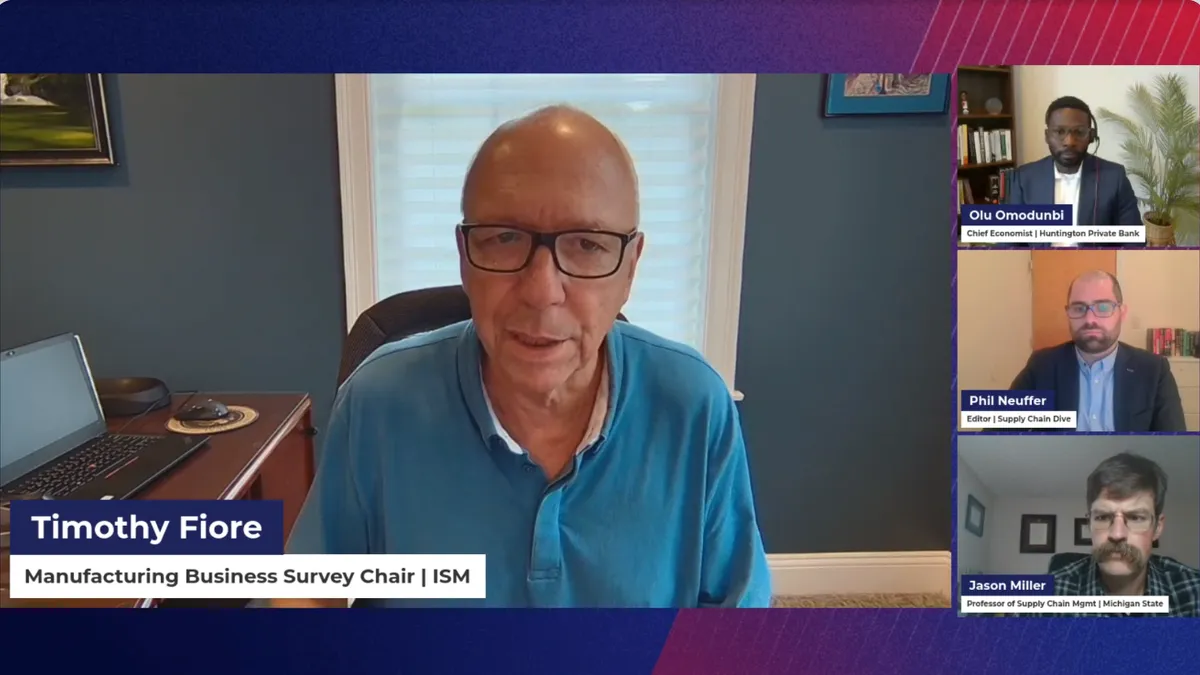Editor’s note: This story is part of a series highlighting takeaways from a July 24 event hosted by Supply Chain Dive, Trucking Dive and Manufacturing Dive. Register here to watch the replay on demand.
U.S. President Joe Biden's departure from the 2024 presidential race has sparked further uncertainty in companies' demand forecasts amid an underwhelming year for manufacturers, experts said during an Industry Dive virtual event on Wednesday.
Recent polling suggests a close election race between Republican presidential nominee Donald Trump and presumed Democratic nominee Vice President Kamala Harris, said Jason Miller, a professor of supply chain management at Michigan State University. That makes it less clear which broad policy portfolio supply chain and manufacturing executives will have to contend with in 2025.
"I think that may kick the can down the road for certain capital investment decisions," Miller said during a panel at the “Supply Chain Outlook: Trends and Risks To Watch in 2024" event.
For example, a Republican in office could spur more investment in oil and gas products, while a Democrat in office could increase companies' focus on green energy investments, said Timothy Fiore, manufacturing business committee chair at the Institute for Supply Management.
"If you're not really sure where the money is going to be spent, you're not going to get ahead of it," Fiore said.
Fiore said manufacturers are in a belt-tightening phase, with few willing to make equipment, labor and inventory investments amid the unknowns of an election year, tepid demand and heightened interest rates.
As a result, it's unlikely that production activity will increase in the second half of the year, experts said. A rate cut by the Federal Reserve in September would help, but it would likely come too late to help this year's manufacturing activity.
"Frankly, the second half of 2024 is going to be weaker than the first half of 2024," Fiore said.
As policy uncertainty and soft demand continues in the near term, manufacturers need to find ways to be as efficient as possible, Miller said.
"I do think we've got another six months or so of reasonably weak demand conditions," Miller said. "Then, once we get into 2025, we'll see if the [Federal Reserve] cuts rates a few times, we'll see if construction activity is set to improve, and then we would be in a much better position from a manufacturing standpoint."














